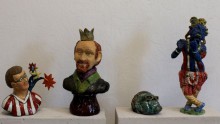The Odesa-based artist Natalia MARYNENKO has displayed her works. Ukrainian baroque, Hinduism, Daniil Kharm’s dead old woman, Hasidic dances, and “augmented reality” – all things mixed in this odd project.
God or, to be more exact, the gods have never been toppled. Almost the entire pantheon of Hindu deities travels across the exhibit “Baked Ceramics.” Perhaps for the first time in Kyiv, ceramic sculptures – the Humsafar cycle – are displayed in the technique of “augmented reality” at the Educatorium art center. To look at, virtual 3D models do not differ at all from their real-life offline 3D counterparts. But you can examine them through the screen of a tablet or a smartphone only. To do so, you have to download a supplement made by programmer Dmytro Dokunov.

Natalia MARYNENKO
CATCHING SHIVA AND CHASING POKEMONS IS NOT THE SAME THING

People are pacing what seems to be an absolutely empty room, where there are only old Indian newspapers on the floor. They guffaw and gesture, peering into the screens they hold in their hands and look as if they suffer from the “shamanic illness.” Or they seem to be ghost-seers, all like Moses or Swedenborg. But, to quote a well-known cartoon character, “all can’t go crazy together!” Looking for virtual sculptured gods, Kyivites do not notice that they are becoming quite real and “living” exhibits. Catching Shiva with Kali and chasing Pokemons is not the same thing, and this suddenly opens up such a diversity of meanings!
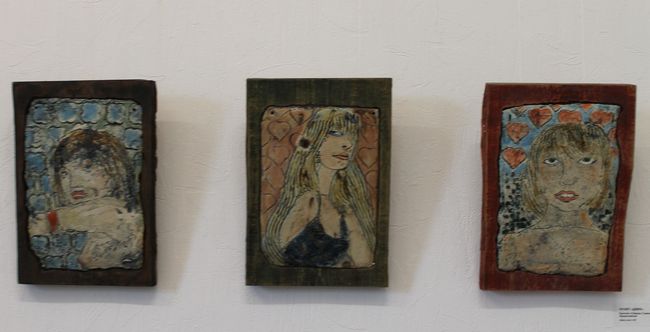
Natalia Marynenko’s “Baked Ceramics” is a well-considered, albeit funny and ironical at first glance, project. It takes us to the traditions of high baroque and its idea of “the world like a book” and to the oriental idea of the multiplicity of worlds. At least, the combination of the very serious “in essence” and the comical “on the surface” can be compared to the poems and prose of Daniil Kharms.
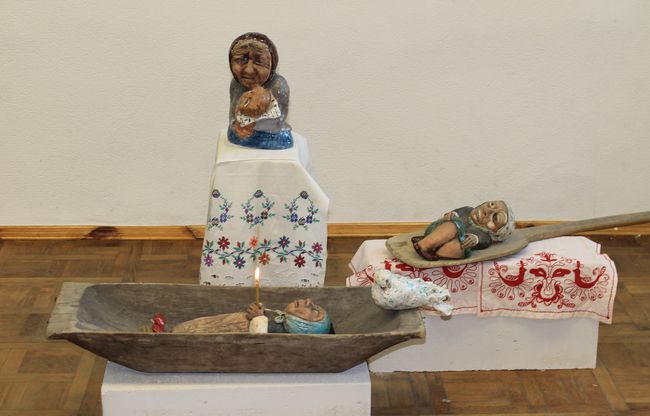
Incidentally, the dead old woman is also present at the exposition. She lies in a clay trough, with a lighted wax candle in hand, and smiles serenely. “She died of happiness,” Marynenko explains.
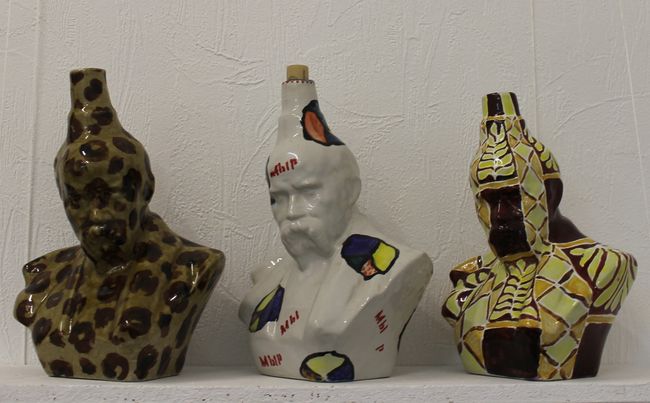
Besides, you can see living and dead pigeons made of clay among the objects of the eight cycles of “Baked Ceramics” (by the way, it is the legendary Uta Kilter who wrote the art-related data sheet for the exhibit, but her text deserves a special reading). The ceramic pictures show, among other things, ironic female portraits, the dancing Hasids, and clay samurais who cross… China ink brushes with each other. The best-known Odesa artists became monuments to themselves here (the “Sweet” cycle): Leonid Voitsekhov and Oleksandr Roitburd are the blue Shiva and a clay-baked petty monarch with a toy crown on, respectively, while Taras Shevchenko, or, to be more exact, a copy of his bust, turned into a painted-over flask for…moonshine.

“The flask contains one and a half liters. No, there’s no politics here. Simply, I once worked at a Slavuta factory that produced porcelain plumbing items. And moonshine was the main ‘currency’ there. You just couldn’t do without ‘a half-liter,’” the artist says smiling.
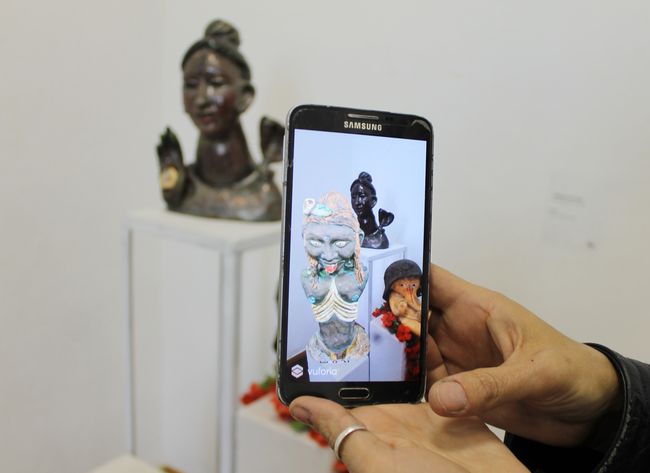
Indeed, it is we who think up all kinds of political and “topical” connotations, looking at the exhibited items. Like in everyday life, each of us attaches his or her biased opinion to events. Most of the spectators look somewhat cautiously at a totally bizarre sculptured pair. An iron chevron from the army cap is soldered into the clay forehead of “Demobbed Shiva.” What’s the point? Is it praise or subtle mockery? The touching peach-colored baby elephant Ganesha is garlanded with flowers. But it wears a World War II-time German helmet (“I bought an authentic one in an antiquary shop,” Marynenko says, explaining its origin). And she shows a spectator the clay palm with a carved swastika. “The swastika is in fact ‘Indian,’ the right one. It’s a solar sign and a symbol of fertility and other good things. But everybody can interpret what they see in line with their own principles,” the artist comments.
“SPEAKING – UNDERSTANDING”
Playing with the famous Humboldtian maxim “speaking – understanding” as proof of the ambiguity of the surrounding reality is perhaps the chief message of this chimerical exhibit and, in general, of this artist’s “symbolic” oeuvre. She is also well known for collaboration with Kyiv’s theater Dakh. Together with producer Vlad Troitskyi, Natalia also worked on staging the Gogolfest. She “invented” the style she calls narrative-analytical therapy… at the producer’s garage that served as her studio at the time. In the past few years, Marynenko has been leading a half of her life in her native Odesa, where she set up a children’s earthenware studio, “Detski Lepet” (“Baby Talk.” A pun: in Ukrainian, this word combination is consonant with “Children Sculpt”). She spends another six months in Goa, India. She creates “baked ceramics” there for the local museum of contemporary art. So at least the Kyiv exhibit’s virtual gods are a really serious thing.

The real prototypes of Marynenko’s clay statues of the Hindu pantheon can be found in India. A local Hindu priest even prayed to one of them on the altar for two weeks. Ms. Marynenko is noticeably proud to be saying this. You will derive pleasure from seeing the 3D statue of a good goddess next to the playful Ganesha at Educatorium if you, of course, remember that any reality is “augmented” – it is not only the one you are aware of at first glance.
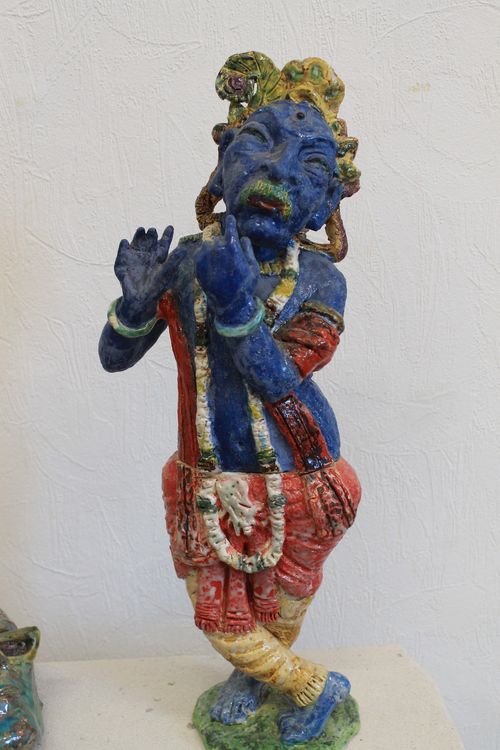
The exhibit will remain open until June 9.

